
It’s the end of an era for the Boeing 717 in Australia, with Qantas retiring its last one on Saturday. The final QantasLink Boeing 717 service is scheduled for Saturday afternoon from Sydney to Canberra.
At this stage, National Jet Systems – which flies under the QantasLink brand – has just two Boeing 717s left in active service. It appears that VH-YQW – sporting the “Discover Tasmania” livery – will operate the following final flights on Saturday:
- QF1500 & QF1504 from Canberra to Sydney
- QF1562 & QF1563 between Sydney and Launceston
- QF1503 & QF1511 from Sydney to Canberra
The final flight will be QF1511, departing Sydney at 4.55pm and arriving in Canberra at 5.50pm – likely with minimal fanfare.
Next Saturday also conveniently marks the last day of the current IATA northern summer scheduling period. Airlines often update their schedules around this time.
Contents
A brief history of the Boeing 717 in Australia
The Boeing 717 was originally developed by American aircraft manufacturer McDonnell Douglas as the MD-95. It was a shorter version of the MD-90, which in turn was a more modern version of the MD-80 series. The MD-95 was rebranded as the Boeing 717 when McDonnell Douglas merged with Boeing in 1997.
The first Boeing 717 was delivered in 1999. In total, Boeing delivered 155 of these aircraft between then and 2006. This means that all Boeing 717s ever produced are now between around 18 and 26 years old.
In 2000, Impulse Airlines was the first Australian airline to take delivery of a Boeing 717. Impulse Airlines ultimately operated 8 Boeing 717s, which went on to fly for QantasLink after Qantas acquired Impulse Airlines in 2001. When it began operations in 2004, Qantas’ budget carrier Jetstar also briefly flew ex-Impulse Airlines Boeing 717s.

QantasLink went on to fly Boeing 717s for more than two decades before their retirement. They were initially used primarily on regional routes, such as Cairns-Alice Springs and intra-WA flights, in an all-Economy layout.
In 2013, with Qantas retiring its Boeing 737-400s, it installed Business Class on selected 717s and started using them on capital city routes like Canberra-Sydney, Canberra-Melbourne and Hobart-Melbourne.

Some frequent flyers loved the Boeing 717
The Boeing 717 had a bit of a cult following. Its rear-mounted engines and “T-tail” make it stand out. Some flyers particularly loved its powerful engines, which would often result in fast and steep take-offs.
The 2-3 Economy seating layout was also popular. There was only one middle seat per row, and couples especially liked the pair of seats on the left side.

Some aviation geeks loved the sound of the engines, too. That said, when sitting towards the back of a 717, those engines could be really noisy. And the last few rows of seats offered no view at all, due to the position of the engines right outside the windows.
My thoughts on Qantas’ Boeing 717s
Having lived in Canberra, I ended up flying QantasLink’s version of the Boeing 717 dozens of times. I was a fan of these jets for a while, but I personally won’t miss them that much.
As nice as the planes once were, they were just getting too old and unreliable. The interiors were dated, and at some point even the window shades wouldn’t stay up by themselves.
My biggest gripe with the Boeing 717s, towards the end of their service life, was their unreliability. I’ve spent countless hours of my life waiting at airports because my Boeing 717 – or that of a family member I was picking up in Canberra – had “gone tech”. In fact, a few years ago, the 717 delays and cancellations on my regular Canberra-Melbourne flights became so frequent that I started preferencing Virgin Australia on that route.
My last flight on a QantasLink Boeing 717 was a few months ago, flying once again from Melbourne to Canberra. The flight ran two hours late after needing some unscheduled maintenance.

This photo that I took of the departure board in Melbourne Airport that evening pretty much sums up what I won’t miss about the 717s!

So, I’m pretty happy that Qantas is now using Airbus A220s and Embraer E190s on routes that were previously served by the Boeing 717s. Those aircraft are more reliable and just offer a better all-round customer experience.
Where you can still fly a Boeing 717
There are still two US airlines using Boeing 717s in regular service – Delta and Hawaiian Airlines.

Delta will retire its Boeing 717s within a few years, which would ultimately leave Hawaiian as the world’s last 717 operator. These jets are the backbone of Hawaiian’s inter-island fleet, flying lots of short hops between the Hawaiian islands. Hawaiian Airlines is yet to decide on a replacement aircraft for its 717s, so they could keep them around for a while longer yet.



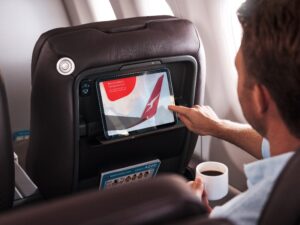






























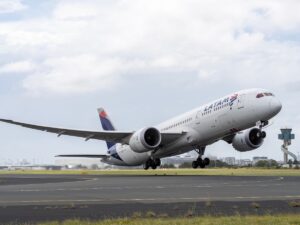



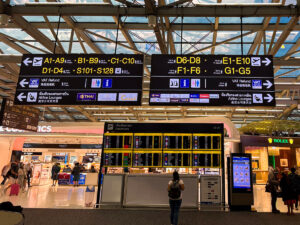

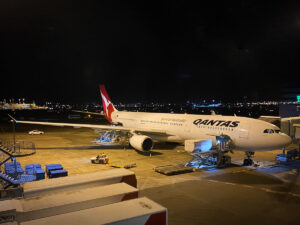




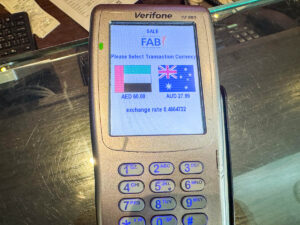




































Community Comments
Loading new replies...
Join the full discussion at the Australian Frequent Flyer →